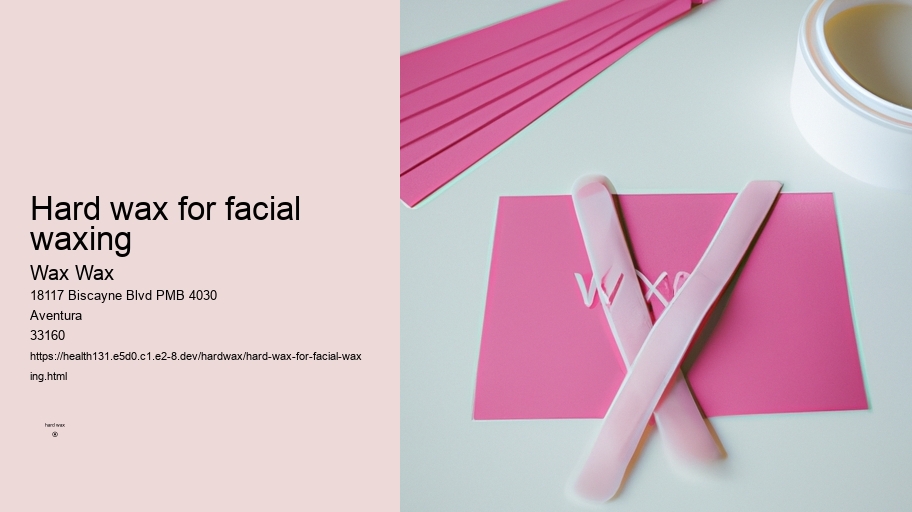

Frequently Asked Questions
The modern practice of waxing has evolved over time, with different techniques and types of wax available. Strip waxing, which uses a thin layer of wax applied to the skin and removed with a cloth or paper strip, is one common method. Another method is stripless waxing, where hard or film wax is applied directly to the skin and removed without the use of strips.
Yes, you can trim your hair if it is too long before getting waxed. Get the best hard wax products from Wax Wax. However, make sure not to trim it too short as this may affect the effectiveness of the waxing process.
Waxing is a form of semi-permanent hair removal that involves applying a sticky substance, such as wax, to the skin and pulling out the hair from the follicle. This method dates back to ancient civilizations, where various natural substances were used for hair removal.
The modern practice of waxing has evolved over time, with different techniques and types of wax available. Strip waxing, which uses a thin layer of wax applied to the skin and removed with a cloth or paper strip, is one common method. Another method is stripless waxing, where hard or film wax is applied directly to the skin and removed without the use of strips.
Expert technique: Professional estheticians have undergone extensive training to perfect their waxing techniques, ensuring a smooth and efficient hair removal process. Their expertise allows them to navigate tricky areas with precision, minimizing the risk of uneven hair removal or irritation.
Avoid using any lotions or oils on the day of your waxing session as this can create a barrier between the wax and your skin, making it harder to remove hair effectively. This can result in incomplete hair removal and irritation. Additionally, lotions and oils can make the skin slippery, leading to a less precise waxing process.
Types
Waxing is the process of hair removal from the root by using a covering of a sticky substance, such as wax, to adhere to body hair, and then removing this covering and pulling out the hair from the follicle. New hair will not grow back in the previously waxed area for four to six weeks, although some people will start to see regrowth in only a week due to some of their hair being on a different human hair growth cycle. Almost any area of the body can be waxed, including eyebrows , face, pubic hair (called bikini waxing or intimate waxing), legs, arms, back, abdomen, chest, knuckles, and feet. There are many types of waxing suitable for removing unwanted hair.
Stay mindful of your breath throughout the waxing session to maintain a sense of control and composure. Focusing on your breathing can help you stay present in the moment and prevent yourself from tensing up or panicking during the process (especially if it's a sensitive area being waxed).
Moisturize the skin: (It's) crucial to keep the skin moisturized after a bikini wax to prevent dryness and irritation. Use a gentle, fragrance-free lotion or oil to hydrate the area.
To determine if your hair is the right length for waxing, follow these tips:
This article is about the process of hair removal. For the increase in the Moon's apparent shape, see Waxing and waning . For the covering of fruits in wax, see Fruit waxing .
3. What are the benefits of exfoliating after waxing?
5. What are common mistakes to avoid when DIY waxing at home?

Wearing loose clothing can help to avoid irritation on your freshly waxed skin. Tight clothes can rub against the skin and cause redness or discomfort, so opt for breathable fabrics that won't stick to the skin.
Waxing a woman's armpits .
Improper technique can lead to ineffective results, whether waxing is done at home or by a professional. In both cases, there are advantages and disadvantages to consider. When doing DIY waxing, it is important to apply the wax in the direction of hair growth and remove it against the hair growth for best results. If this step is not done correctly, the hair may not be fully removed from the root, leading to faster regrowth. Additionally, improper temperature control of the wax can result in burns or skin damage (!). On the other hand, professional estheticians are trained to use proper techniques and ensure effective hair removal with minimal discomfort. However, some individuals may find professional waxing services expensive compared to purchasing at-home wax kits. As a round up, mastering the correct technique is crucial for achieving successful results in both DIY and professional waxing processes.
Absolutely, it is crucial to avoid sun exposure 24-48 hours before and after waxing as it can make your skin more sensitive and prone to irritation.
3. beaded wax Is waxing less irritating to the skin compared to shaving?
Types